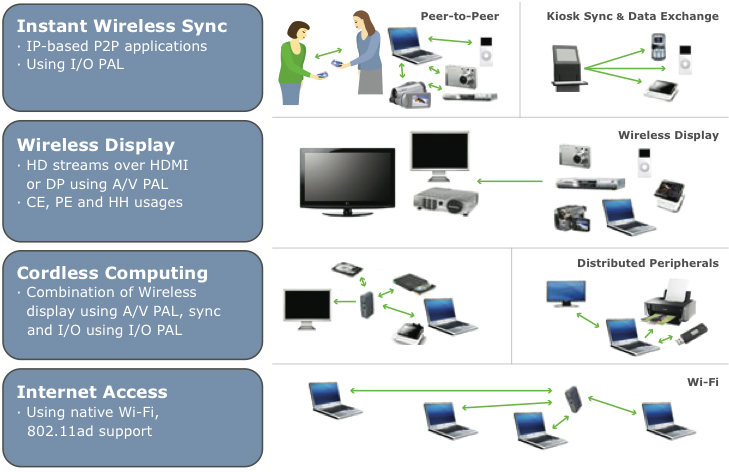Intel on Thursday demonstrated multi-gigabit wireless docking technology that affords speeds of up to 7Gbps, 10 times the rate of the fastest Wi-Fi networks based on the IEEE 802.11n standard.
At its annual Intel Developers Forum, the chip maker demonstrated Wireless Gigabit (WiGig) docking technology using an ultrabook. The company said WiGig is on track to becoming the most important next-generation multi-gigabit wireless technology.
Intel CTO Justin Rattner said there will come a day when an ultrabook or tablet can be dropped anywhere on a desk and automatically connect to a display monitor and peripherals.
"Looking to the future, all computing will become wireless computing, with an ever-increasing demand for faster wireless communication," Rattner said in a statement. "I'm excited by what I've seen from WiGig technology so far -- not only its multi-gigabit throughput capability, but also the flexibility of the single technology to support a wide range of... applications."
Intel demonstrated the WiGig technology, combined with advanced protocol adaption layers (PAL) designed for PC and mobile applications.
The WiGig medium access control (MAC) and physical (PHY) control specification operates in the unlicensed 60GHz frequency band, which has more spectrum available than the 2.4GHz and 5GHz bands used by existing Wi-Fi products. This allows wider channels that support faster transmission speeds.

Potential uses for wireless docking technology. (Source: WiGig Alliance)
The WiGig specification is based on the IEEE 802.11 standard, which is at the core of hundreds of millions of Wi-Fi products deployed worldwide, according to the Wireless Gigabit Alliance, a nonprofit standards organization.
The specification includes native support for Wi-Fi over 60GHz, and new devices with tri-band radios will be able to seamlessly integrate into 2.4GHz and 5GHz Wi-Fi networks, the WiGig Alliance stated.
Several other members of the Wireless Gigabit Alliance plan to demonstrate WiGig technology at CES 2013 in Las Vegas in January.
According to Ali Sadri, chairman of the WiGig Alliance, the specification also supports wireless implementations of HDMI and DisplayPort interfaces, as well as the High-Bandwidth Digital Content Protection (HDCP) scheme used to protect digital content transmitted over those interfaces. It scales to allow transmission of both compressed and uncompressed video.
The WiGig specification, for example, allows for wireless connectivity using HDMI and display extensions, so that laptops may one day be able to connect to televisions and stream video.
"Intel demo'ing WiGig ... is a big deal for us and the industry," Sadri said. "It is recognition from one of the world's leading vendors that WiGig is real and has a bright future.
"In just a few years to come, I believe people will not know what they did without it," Sadri said. "The technology is nearly ready, and with chips from multiple WiGig member companies already in production and certification ready for mid-2013, I would expect a real explosion in the number of WiGig devices coming to market soon."





